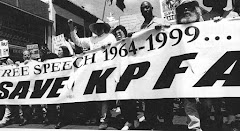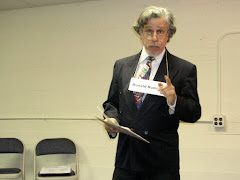
In 1978, ten years after I first arrived in Vermont, Nixon was gone, Jimmy Carter was president, and I returned to Bennington to see how things had played out. When I tried to contact school superintendent George Sleeman, however, he didn't want to meet. But I knew that he, along with Town Manager Lou Sarelas and assorted police and social workers, were scheduled to hold a Vandalism Task Force meeting that day at the Mt. Anthony Country Club. The place was for sale and the meals were cheap.
Meanwhile, I received kid-glove treatment from high school principal Don Banchik, a firm but open disciplinarian 21 years into his act. He’d solved most of the school's problems, he claimed, by instituting overlapping sessions to ease overcrowding and eliminating department heads. He and two assistants planned the whole curriculum now. Banchik dealt severely with vandals and drug users who "experimented" on school grounds. To prove it he showed me some dope and a collection of pipes in his desk.
"I do understand the euphoric feeling in a social sense," he explained, "but in school marijuana does inhibit learning. I know Jon doesn't agree with me. Right, Jon?" Jon, his faculty supervisor, looked up but wouldn't say.
Did the school have a Ms. subscription now? I wondered. "No, but there are a lot of magazines we don't have," he replied. I reminded Banchik that Ms. had offered the school a free subscription. He shrugged it off and talked instead about his new health curriculum. He wanted me to know that sex and drug education weren’t being neglected.
And what was the secret of this principal's success? "I'm very accessible at all times," he explained. "I'm in the hall, in classes, at all events, constantly exposed." I was already intimidated.
"I'm winning the confidence of the faculty," he went on. "We could even get a bond vote through for a new middle school now." That told me some things hadn’t changed. The project had been on the drawing board for 10 years, since the local parochial school closed and Mt. Anthony became overcrowded. When I ran for a seat on the school board in 1972, overcrowding was my campaign issue. I'd called my line the Open Door Party. My slogan was “Open the doors and let the kids out.”
By the time I arrived at the country club, Town Manager Lou Sarelas was eating lunch with Sleeman and the gang. Known as Suitcase Lou – because he’d held so many manager jobs that he supposedly never unpacked his bags – his agenda that day was to push through a neighborhood crime prevention program and a revolving fund to reward vandal-stoppers. "I see the protective arm joining forces with neighbors, people with CB radios, and organizations like the Lions," he explained.
The Vandalism Task Force was especially sensitized by a recent attack, the weekend trashing of the junior high school library and main offices. Vandals also had wrecked local gardens, town signs, the high school, even the local graveyard. Bennington was witnessing a weekly demolition roulette. Yet when the Task Force was formed not one student wanted to join.
Poisoned pot, bad water, teen criminals – the ingredients for a major psychic illness were all here. George Sleeman wasn't about to confide in me, not after a critical article I'd written on his powerful family before becoming Suitcase Greg. But maybe Suitcase Lou would have some answers, I thought. A flat tire on his town car after the meeting provided me with a perfect excuse to give him a lift to the office.
Beginning the interview, I asked about the lead in Bennington’s water. It had been discovered over a year earlier during state Health Department tests of industrial lead levels at Globe-Union. "We've added a combination of sodium bicarbonate and sodium hydroxide, which forms a coating on the lead pipes," he explained. But people claimed the water tasted worse than ever. "It does affect the taste," he admitted, "especially when we add chlorine. But it's mostly imagination."
Lou fancied himself a long-range planner, and therefore was willing to admit that water was indeed a limiting factor in Bennington. Aside from the health hazards, he mentioned the increased demand created by development. Yet he supported the major new projects in the works and pooh-poohed the paranoia of local merchants.
Before exiting he referred cryptically to narrow-minded people who were blocking change. I probed for names. Could it be Reggie Perrott, the reactionary selectman who ran a local bar well-known for its brawls? Perrott had recently confessed to income tax fraud, yet remained on the board afterward. "Reggie's a fine, upstanding citizen," said Lou.
Then what about Frank Velkas? He was the guy who blew the whistle on Bennington's water pollution, a psychoanalyst without clients whom Banner reporter Tim Powers had described to me as "certifiable."
"Velkas has very accurate information," Lou warranted."What bothers me about him is his methods." Since he obviously wasn't going to name the narrow-minded, I gave up amiably. Yet his line on water problems left a bad taste. Maybe I had those lead-laced blues. My next stop just had to be C. Frank Velkas.
"I'm gonna bury them," he told me over the phone before we met. Tough rhetoric, but I wasn't certain who "they" were. Celestin Frank Velkas turned out to be rational – at first – and armed with hard data. When he couldn't get action from local and state officials about lead levels running up to 10 times the federal standard, and after the Center for Disease Control called it "a major public health hazard," he’d gone to the top: the Environmental Protection Agency. Eventually, the town received money to distribute lead-free water and agreed to replace some of the corroding pipes.
Velkas was offered an EPA National Merit award but turned it down. As far as he was concerned, the problem hadn't been solved. "Sodium hydroxide, what's that used for?" he asked. "When you start mixing chemicals strange things happen. No studies have been done on the effects of mixing water with lead, chlorine and these chemicals. After they started treating the water, you know what happened?" I didn't. "All the goldfish in Knapp's Pet Shop rolled over and died. There's an animal test for you. The town is doing just what Globe-Union is doing, and the damage continues while they fiddle around. We're in an era of contamination, and the culprits are pillars of the community."
His verdict was brutal. "They would rather see people go down the tubes than do anything about it." But what was he going to do? His lawsuit had been rejected. "What's the use of filing suits when the system won't respond," he snapped, wavering between indignation and despair.
When we began the interview he’d assured me that "I'm gonna resolve the issue here." By the end he was playing public enemy, closely watched by government agents. And when I finally reached my car to leave he stood in the road to block my departure. Now he was pessimistic.
"It's too late to help this generation," Velkas warned. "To some extent we're all brain-damaged. Even you."
With that diagnosis I headed out of town, eager to avoid further contamination. Yet even with my foot on the accelerator, I could barely hold an anxiety attack in check. I was prepared to believe almost anything – even lead-induced craziness – about this place now. That might even explain the town's vandalism.
Bennington had gone modern, but the name of the game wasn't progress – unless that means reckless demolition, thoughtless expansion, and benign neglect. The kids apparently knew that things were out of joint, and their main mode of expression was a coarse comment on local leadership. They were mad and rightly so. The law was on the drug warpath, there was nothing doing downtown, and the high school had long ago ceased to be a good place to hang out, talk or roughhouse.
I slipped into fourth gear, speeding past the fenced-in school and Veterans Center, out onto terminal beltline, and beyond the flood-plain mall site. The road whipped into the foothills between blasted rock. Once upon a time this place had been my idea of paradise. I'd loved it and never wanted to leave. But faced with Lead City in the flesh, I decided to keep wandering in the wilderness.

































